Again, this is a quick reminder for myself and I want to share it with you.
There is an interesting webservice which tracks nearly all your (read: mine) parcels. It also offers an RSS feed and maps 🙂
The service is available under http://boxoh.com/
Again, this is a quick reminder for myself and I want to share it with you.
There is an interesting webservice which tracks nearly all your (read: mine) parcels. It also offers an RSS feed and maps 🙂
The service is available under http://boxoh.com/
There are several images related to the CCC which I looked for for quite some time. Probably the oldest is the Pesthoernchen (also as SVG):

While you can get the image above from the official Logos, you can’t get the lower ones (yet): Sterntastatur from 18C3 (Hacking Is Not A Crime) also as SVG:
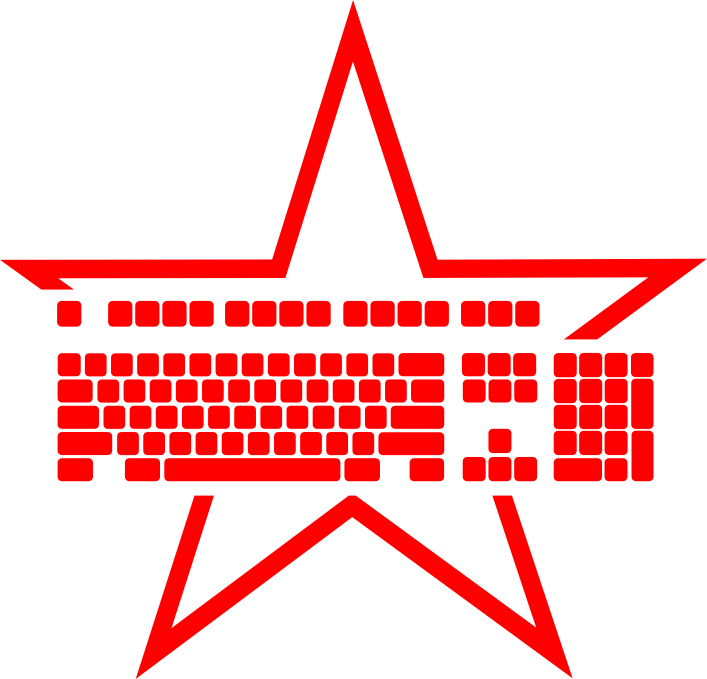
You might like the inverted version (also as SVG): 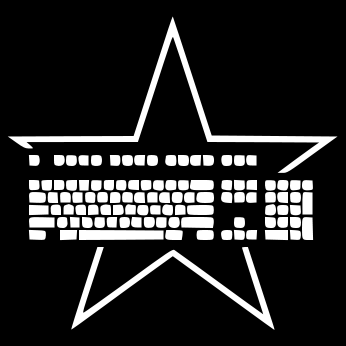
There is a modified version which aims to be more like the original RAF logo by mimicking a shotgun (also a SVG):
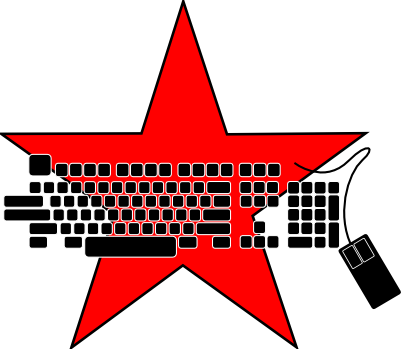
Bald sind Bundestagswahlen und Blumentopf moechten dich mit einem Video zur Wahl motivieren:
Und zur Entscheidungsfindung empfehle ich Rette deine Freiheit, ein wirklich sehr gelungenes Video:
Aber Obacht: Die offensichtliche Empfehlung, die FDP zu waehlen, ist nicht vor dem Hintergrund einer schwarz-gelben Koalition nicht schlau, denn die FDP hat angekuendigt, nur gegen das Zensurgesetz vorzugehen, wenn sie nicht an der Regierung beteiligt sind. Aber auch sonst gaebe es mit der FDP nicht so viel zu lachen.
Eine andere Entscheidungshilfe kann die Uebersicht der Free Software Foundation Europe (FSFE) sein: Auf einer Wikiseite werden Positionen der Abgeordneten zu Freier Software gesammelt. Ein sehr interessantes Projekt.
Noch ein schoenes Video vom selben Macher ist Du bist Terrorist:
Wenn du den Film gut findest, dann vote fuer ihn im Bitfilmfestival Voting!
Wir haben die Kraft! Unser Land kann mehr!
PS: Sorry fuer das einbinden von YouTube, wenn du eine freie Alternative kennst, sag bescheid!
I had to create a huge poster out of an image. The normal way you do that is to somehow prepare many DIN A4 sheets, so you have to enlarge a given image, cut it into many pieces, probably add some padding and if you’re lucky, you get your PDFs you can print.
But how do you actually do this? I used to use psresize and friends because I just wasn’t aware of anything more useful. Of course, dealing with psresize, psnup etc wasn’t very comfortable and I rarely was successful. I remember that I’ve asked a friend of mine to do it for me several times in the past. He owned a Mac and it was rather comfortable with those authoring tools. I began using OpenOffice to create those posters, but it really is uncomfortable: You have to remember which cutout you’ve used in the previous page, then move the image within the page and hope that you match the previous page. Needless to say, that this takes a considerable amount of time.
I always wanted to have a tool which works like this: makeposter --format=DINA0 < input.png > poster.pdf It would scale the image, cut it, add padding for glueing and produce several pages in a single PDF.
I now was told about PosteRazor! An incredibly useful tool to do more or less the stuff I want. It is free software and pretty easy to use. It uses neither Gtk+ nor Qt. Instead, Fulltick is used to build the GUI. I have never heard of it, but it’s okay. The widgets are not as beautiful as Gtk’s and the filechooser is especially bad, but the rest seems to be fine. So it serves almost every need I have 🙂
Awesome, isn’t it? I mean not just that it’s really easy, and you have your own poster in five minutes including printing! They even have extremely good marketing! 🙂
In case you are interested in the GNOME foundation, here are some quick stats: During the second quarter of 2009, we have received 22 applications for a new GNOME Foundation membership, plus 24 applications for renewing the membership. Due to applications arrived before 2009/Q2, 24 applications for a new GNOME Foundation membership have been accepted. During the same period 13 members haven’t renewed their membership and we ended with 368 members.
We can also see the number of members over time on this (pretty huge) graph:

We actually managed to cut our membership base by 25% within the last two years. Nothing too much alarming though because we still have more members than we ever had on average. But still, the trend goes slightly downwards although we probably should catch steam for GNOME 3.0. I would not mind if the people come after they have seen GNOME 3.0 though 😉
Let’s get a closer look onto the new foundation members:
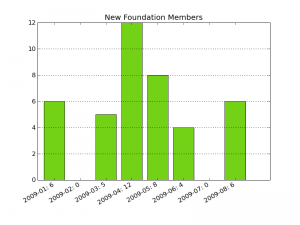
Actually, nothing interesting, I think. 6 new members per month on average.
And the members who dropped out:
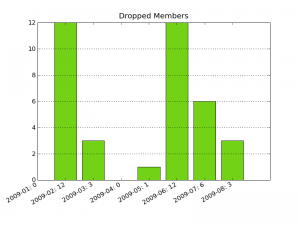
And we can get that compiled into one graph as well:
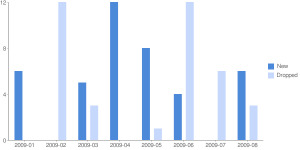
If you have ideas for interesting graphs, don’t hesitate to comment. Note that we don’t have much data though, because we don’t collect that much data anyway. And I really think this is a feature! Actually we could do even better because we currently have no policy when to delete data. So once you are a GNOME foundation member, you’ll be in the database forever. I guess we should fine a policy some time to not keep unused data.
In case you wonder what status your application is in, check the status page of the tickets we receive. New means, that nobody has done any action on it yet. Open is waiting for information from the contacts you’ve supplied and stalled is either no or a not satisfactory answer from your contacts yet.
If you use the LaTeX Beamer package for your presentation and you want to replace your itemize bullets with something more fancy, you might be interested in the following commands:
\setbeamertemplate{itemize item}{\includegraphics[height=1em]{bin/gnome-foot}} \setbeamertemplate{itemize subitem}{\includegraphics[height=0.8em]{bin/gnome-foot}} |
These will set your bullets to anything you want 🙂 A plain LaTeX solution, which won’t work with Beamer, is to use \labelitem:
\renewcommand{\labelitemi}{\includegraphics{foo}} \renewcommand{\labelitemii}{\includegraphics{bar}} |
Hope this helps 🙂
Die Datenspuren in Dresden gehen wider erwarten in eine neue Runde! Es ist schoen zu sehen, dass sich ein neues Organisationsteam im C3D2 Umfeld geformt hat und die gemuetliche Konferenz ans Laufen bringt. Obwohl ich selber noch nie da war, soll es eine ueberschaubare Konferenz sein, die sich weniger um Technik, als um praktische Datenvermeidung und Risiken der glaesernen Gesellschaft dreht. “Hands off – Privacy on” lautet das diesjaehrige Motto: Finger weg von den Grundrechten; der eigenen Privatsphäre bewusst werden.
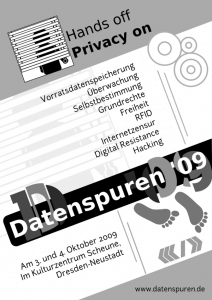
Wenn du also am 03.10.2009 und 04.10.2009 nichts vor hast, bist du herzlich eingeladen nach Dresden in die Scheune zu kommen! Der Eintritt ist frei.
Auch darfst du ueber das Pentabarf deinen Vortrag oder Workshop einreichen, die Schwerpunkte sollen dieses Jahr sein:
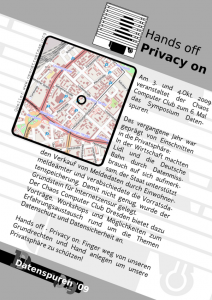
Hier der Trailer zur geplanten Großdemonstration unter dem Motto “Freiheit statt Angst – Stoppt den Überwachungswahn!“, die am 12.09.2009 in Berlin stattfindet. Hinweise zur Anfahrt gibt es im FoeBud Blog.
Die Forderungen der Bürgerrechtler sind:
1. Überwachung abbauen
- Abschaffung der flächendeckenden Protokollierung der Kommunikation und unserer Standorte (Vorratsdatenspeicherung)
- Abschaffung der flächendeckenden Erhebung biometrischer Daten sowie von RFID-Ausweisdokumenten
- Schutz vor Bespitzelung am Arbeitsplatz durch ein Arbeitnehmerdatenschutzgesetz
- Berücksichtigung des Datenschutzes für Bürger- und Arbeitnehmer/innen bereits in der Konzeptionsphase aller öffentlicher eGovernment-Projekte
- Keine einheitliche Schülernummer (Berliner SchülerID)
- Keine Weitergabe von Informationen über Menschen ohne triftigen Grund
- Keine europaweite Vereinheitlichung staatlicher Informationssammlungen (Stockholmer Programm)
- Keine systematische Überwachung des Zahlungsverkehrs oder sonstige Massendatenanalyse in der EU (Stockholmer Programm)
- Kein Informationsaustausch mit den USA und anderen Staaten ohne wirksamen Grundrechtsschutz
- Abbau von Videoüberwachung und Verbot des Einsatzes von Verhaltenserkennungssystemen
- Keine pauschale Registrierung aller Flug- und Schiffsreisenden (PNR-Daten)
- Keine geheime Durchsuchung von Privatcomputern, weder online noch offline
- Keine Einführung der Elektronischen Gesundheitskarte in der derzeit geplanten Form
2. Evaluierung der bestehenden Überwachungsbefugnisse
Wir fordern eine unabhängige Überprüfung aller bestehenden Überwachungsbefugnisse im Hinblick auf ihre Wirksamkeit, Kosten, schädliche Nebenwirkungen und Alternativen.
3. Moratorium für neue Überwachungsbefugnisse
Nach der inneren Aufrüstung der letzten Jahre fordern wir einen sofortigen Stopp neuer Gesetzesvorhaben auf dem Gebiet der inneren Sicherheit, wenn sie mit weiteren Grundrechtseingriffen verbunden sind.
4. Gewährleistung der Meinungsfreiheit und des freien Meinungs- und Informationsaustauschs über das Internet
- Keine Beschränkung des Internetzugangs durch staatliche Stellen oder Internetanbieter (Sperrlisten)
- Keine Sperrungen von Internetanschlüssen
- Verbot der Installation von Filtern in die Infrastruktur des Internet.
- Entfernung von Internet-Inhalten nur auf Anordnung unabhängiger und unparteiischer Richter.
- Einführung eines uneingeschränkten Zitierrechts für Multimedia-Inhalte, das heute unverzichtbar für die öffentliche Debatte in Demokratien ist.
- Schutz von Plattformen zur freien Meinungsäußerung im Internet (partizipatorische Websites, Foren, Kommentare in Blogs), die heute durch unzureichende Gesetze bedroht sind, welche Selbstzensur begünstigen (abschreckende Wirkung)
I am very excited that the Bugsquad has met last month. Finally we got some action in our beloved QA team. Also, I’d like to thank Max Kanat–Alexander for porting our Bugzilla installation from Bugzilla 2.20 to Bugzilla 3.4. I believe that this, and the migration on new servers, will increase the performance a lot and that we can be even more productive. Let’s not hope that the people will file more bugs though 😉
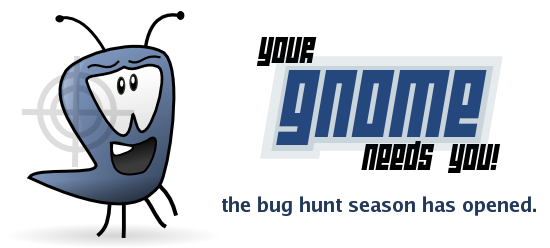
So Javier Jardon kicked that meeting off and we were having productive three hours, I guess. It was really good to see people caring about our bug database. The decisions we’ve made are visible in Andres Blog or on our Wiki page of course.
We’ll have a next meeting and right now, we are using a Doodle to determine the next time and date. Feel free to add something to the preliminary agenda and participate! I am sure we’ll have lots of stuff to discuss, especially due to our brand new bugzilla! 🙂 We can now have a look at other folks like KDE and exchange hacks on our bugzilla! 🙂
Also, I am looking for ways making our processes easier: One thing is giving away bugzilla permissions so that a new Triager can start modifying bugs. We are supposed to track the people we are giving permissions to check that they don’t screw up, but it’s not that easy to track someone right now. Also, we can think about automatically giving away canedit permissions once we have given commit access to git. The argumentation is, that a committer might submit patches from bugzilla and thus needs to be able to close bugs. We’d need to talk to the Sysadmins in order to implement that…
I’m thinking about using a Gobby session while having the meeting just that everybody, including people joining the meeting lately, can see what the current topic is. Another reason is that we you can order or prepare for the next topics if you are a bit bored. Also, we might have an easier protocol at the end, because if everybody writes everything directly in that gobby session, the log will be ready once the meeting is over. I’ll make up my mind and come up with something at the meeting.
Also I think, not using #bugs, but rather #bugs-meet for the meeting is a good idea because you can see who’s actively participating. Moderating the session without knowing who’s actively interested in the debate is not that easy, because you either wait for people who are either offline or have just left or you don’t ask people willing to participate. These are not really big issues but moving to another channel is also not a big deal.
I have just arrived from HAR2009 which was a very awesome event! We were camping for 5 days, drinking beer and attending lectures. Some of us visited Workshops, but sadly I didn’t. I probably was too busy attending talks and visiting the Toasti booth 😉

The CCC has built up a great Dome as well as a big tent for hacking. CCCHH brought Milliways, the last pub at the end of the universe and it was a really cool place to hang out. There were many people from different countries which made it really interesting and enjoyable to just be there. Last but not least, the beer was great 😉
Others have brought a GSM Network! How awesome is that?! Harald Welte and his fellow GSM-Tent members have set up the “42” Network and we were able to place as many (internal) phone calls and SMS as we liked. Of course, we started to script that 😉 So I found out, that sending an SMS via a serial connection to my phones modem is as simple as the following lines:
import serial import time DEVICE = '/dev/ttyACM0' def send_sms(nr, msg): ser = serial.Serial(DEVICE, 115200, timeout=1) ser.write('AT\r') line = ser.readline() line = ser.readline() assert line == "OK\r\n" ser.write('AT+CMGF=1\r') line = ser.readline() line = ser.readline() assert line == "OK\r\n" ser.write('AT+CMGS="%s"\r' % nr) ser.write('%s\n' % msg) ser.write(chr(26)) time.sleep(3) lines = ser.readlines() print lines ser.close() |
Sadly, I couldn’t hack more with the GSM network because it was shut down rather early and I didn’t use my computer much during the lecture time. So next time I’ll try to reproduce the Curse of Silence and play around with PDU SMS.
So I have been to a lot of interesting villages and I met some interesting people but sadly GNOME people couldn’t make it. Maybe we’ll have a GNOME Village next time… 🙂 If you are interested in how the camp looked, watch this impressions movie or click through the media.
The next CCCamp will probably be in two years and according to rumours it’ll happen in Finowfurt again. I’m really looking forward to that event!